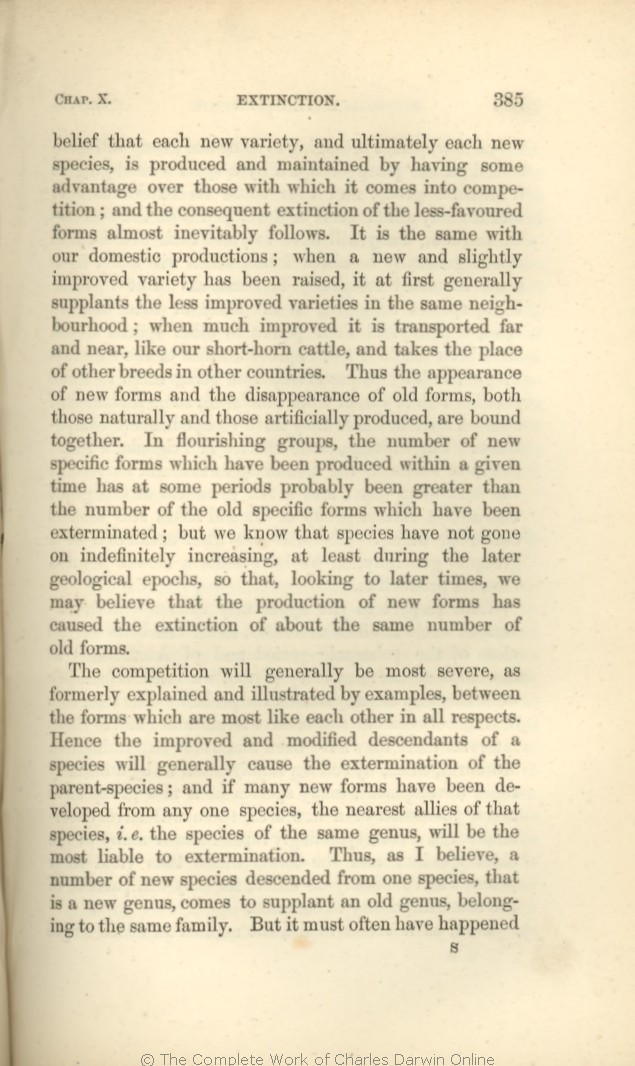belief that each new variety, and ultimately each new species, is produced and maintained by having some advantage over those with which it comes into
competition; | competition; 1859 1860 1866 1869 1872 | | compe- tition; 1861 |
| the less-favoured 1866 1869 1872 | | less-favoured 1859 1860 1861 |
| productions; 1866 1869 1872 | | productions: 1859 1860 1861 |
| generally supplants 1866 | | supplants 1859 1860 1861 1869 1872 |
| those naturally and those artificially produced, 1866 1869 1872 |
| natural and artificial, 1859 1860 1861 |
| ..... 1866 1869 1872 | | certain 1859 1860 1861 |
| has at some periods probably been 1866 1869 1872 |
| is probably 1859 1860 1861 |
| the number 1866 1869 1872 | | that 1859 1860 1861 |
| specific forms 1860 1861 1866 1869 1872 | | forms 1859 |
| species have 1866 1869 1872 |
| the number of species has 1859 1860 1861 |
| epochs, 1866 1869 1872 | | periods, 1859 1860 1861 |
| that, 1866 1869 1872 | | that 1859 1860 1861 |
| times, 1866 1869 1872 | | times 1859 1860 1861 |
|
|
The competition will generally be most severe, as formerly explained and illustrated by examples, between the forms which are most like each other in all respects. Hence the improved and modified descendants of a species will generally cause the extermination of the parent-species; and if many new forms have been developed from any one species, the nearest allies of that species,
i.e.
|
i.e.
1866 1869 1872 |
|
i
.
e
.
1859 |
|
I. e.
1860 1861 |
|









